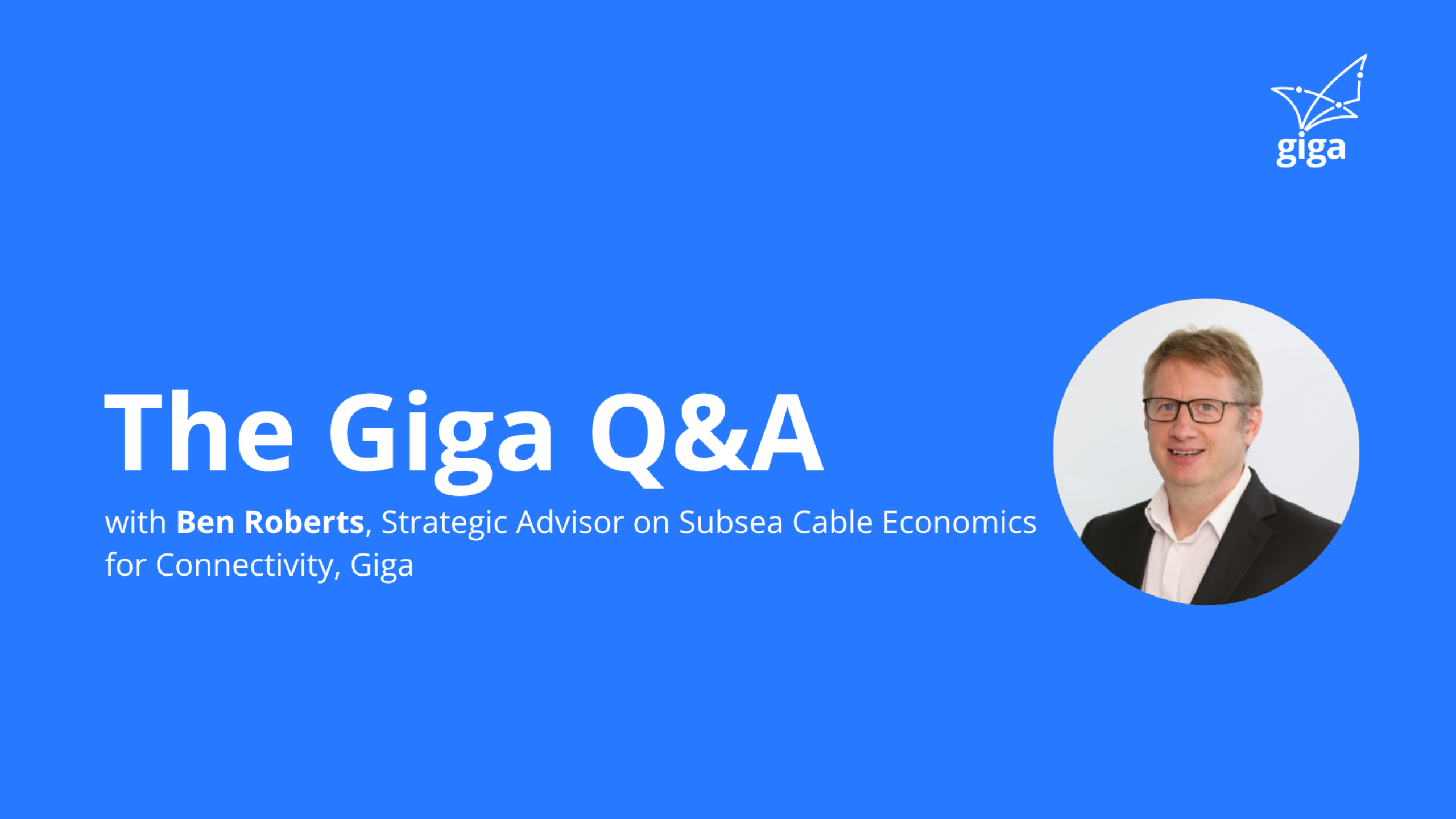Ben Roberts, who recently joined Giga as Strategic Advisor on Subsea Cable Economics for Connectivity, shares his thoughts from a wealth of experience as former Group Chief Technology and Innovation Officer at Liquid Intelligent Technologies, the leading communications solutions provider across Africa. He oversaw the company’s technology strategy and operations and drove innovation to deliver cutting-edge services to customers.
1. How important is school connectivity within Africa’s overall strategy of digital transformation?
It is the most important thing in long term achievement of digital transformation and therefore it should be the key KPI of governments in implementing their national broadband plans. By addressing school connectivity comprehensively at a national coverage level, you address two important challenges. The first is digital skills and literacy, accompanied by access to information, which is essential for education in any subject. Children who grow up having access to digital devices plus having access to connectivity embedded into their learning have a chance to grow up ready for the jobs of the 21st century and are prepared for the disruption that AI is bringing to many traditional jobs. Secondly, the coverage and usage gaps, or “digital divides” that have emerged, will be levelled by deploying meaningful connectivity to every school, in every village.
2. What is the single most important thing governments can do to facilitate school connectivity?
Political will is what is required foremost, and that has to crosscut the different ministries and agencies of government in partnership with the private sector to get the job done. Primarily across Africa, Ministries of ICT are the ones responsible for connectivity, while Ministries of Education are responsible for schools, and the Ministries of Energy are the ones responsible for electrical power. The private sector telcos and ISPs however are the ones who have made most investment into connectivity and have connected most people and know how best to deliver fixed and mobile broadband. Governments that create the best environment for collaboration with the respective actors to resolve the challenge together are the ones that will enable their countries to meet the audacious goal of Giga, in connecting every school in the world to information.
3. You recently joined Giga in a position that hadn’t existed before: Strategic Advisor on Subsea Cable Economics for Connectivity. Explain how this role can advance Giga’s mission?
Put simply, the cost of first mile data bulk transit is just too expensive in some countries for schools, or education departments to be able to sustain connectivity of sufficient bandwidth to meet a school’s needs. I will be focussing on countries engaged with Giga where the cost of wholesale data, or “IP Transit,” is comparably expensive compared to other markets. Addressing the economics of subsea cables, and particularly through partnerships and innovative network strategies, will be the core mission of my role.
4. How can the challenge of sustainable school connectivity be overcome?
The main challenge to sustaining a school connection is to be able to supply enough bandwidth to be useful to the school at a price that they can afford. This is what we refer to as “meaningful connectivity.” If the monthly service fees for internet run into hundreds of dollars per month, then it is likely that many schools will not be able to make it a priority in their budgets to pay for that connectivity. Countries such as Kenya and South Africa have seen large investments into fibre networks over recent years, such that the monthly internet subscriptions can be affordable to a school, along with other bills such as electricity. The advent of LEO satellites, with fast packages priced at below $100 per month in any African country where they are licenced, goes a long way to levelling the playing field in opening up that affordability bracket, but for most schools in Africa we really need to have school internet bills that are less than $50 per month.
5. Have you run across an example of the benefits of school connectivity that you would like to share?
I remember once connecting a school in Mandera, in the very northernmost area of Kenya, to satellite internet for the first time. I tried to find some information online about this school and I happened across a YouTube video showing some cultural singing and dancing by the girls at the school that they had posted some years ago. I sent the link to the ICT teacher there, and he told me that in fact he was the one who created the YouTube channel and posted the video. He had wanted to post more on the channel but until now had not had sufficient connectivity from the mobile data networks. I just loved this — how a school can use connectivity to tell its stories of learning and teaching in the remotest parts of Kenya. The benefits of connectivity and the internet are for sharing information and not just consuming.

